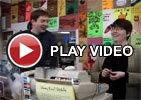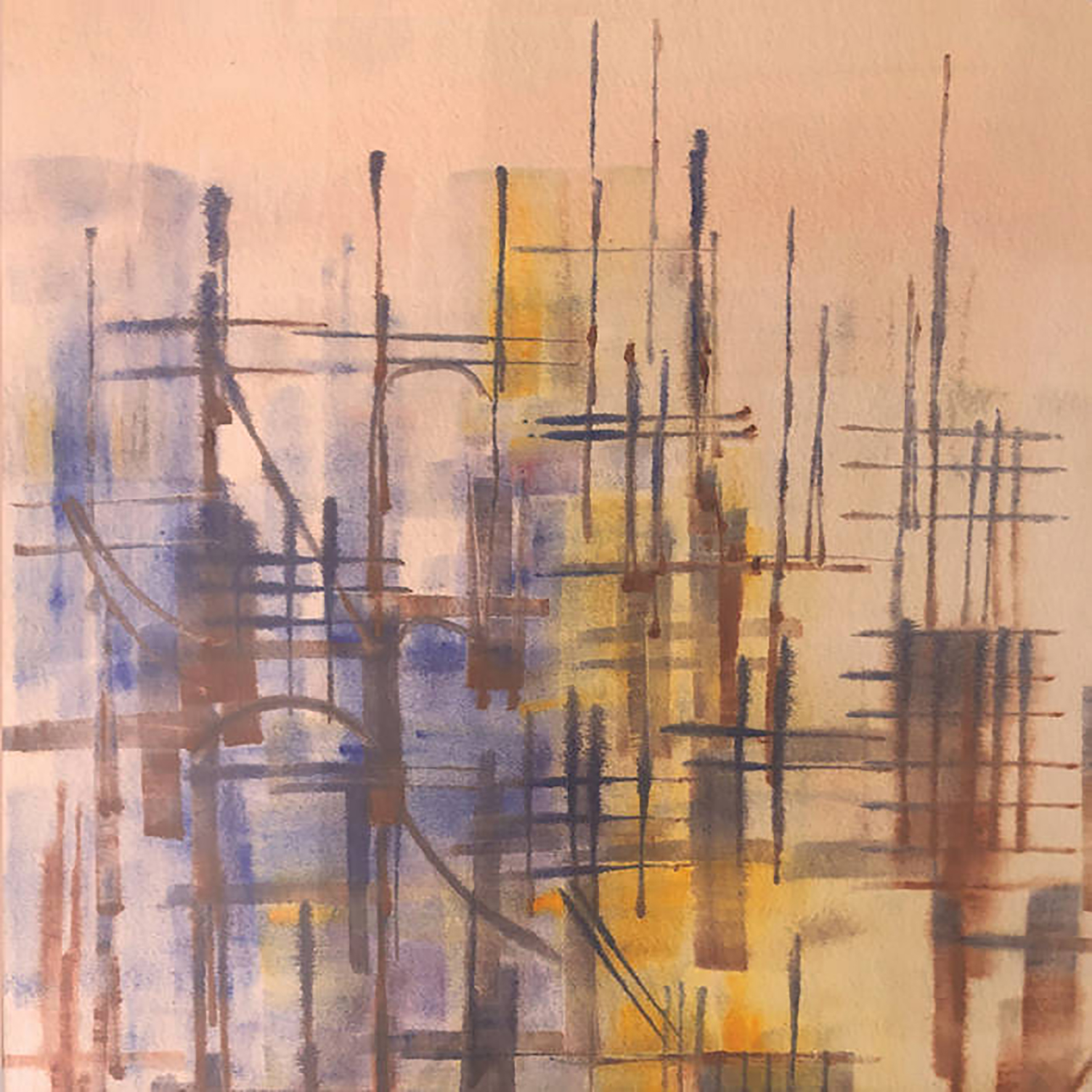 As far as I am concerned, Konstantinos Soublis earned a lifetime pass as dub techno royalty with his early Chain Reaction work (the likes of which enjoyed a well-deserved renaissance when Type reissued Vibrant Forms in 2013). Much like fellow visionary Moritz von Oswald, however, Soublis has a creatively restless spirit that has led him in a number of different directions since that scene's late '90s/early '00s golden age came to an end. While I cannot say that I have been a fan of all of Fluxion's various detours over the years, Soublis's unpredictably hit-or-miss discography has continued to surprise me with a legitimate hit every few years. In fact, Fluxion has been in unusually fine form recently and that upswing seems to have culminated in this album, which is unexpectedly one of the most uniformly strong and inspired releases in the project's entire oeuvre. Part of that success is likely due to Soublis's decision to take his vision in a more intimate and inwardly inspired direction (the album was inspired by "real life moments, people, expectations, joy, dreams and disappointments"), but the primary appeal of Parallel Moves is that his new inspirations manifested themselves in quite a killer batch of unusually sensual, soulful, and melodic songs. To my ears, this is a very strong contender for the best Fluxion album ever released.
As far as I am concerned, Konstantinos Soublis earned a lifetime pass as dub techno royalty with his early Chain Reaction work (the likes of which enjoyed a well-deserved renaissance when Type reissued Vibrant Forms in 2013). Much like fellow visionary Moritz von Oswald, however, Soublis has a creatively restless spirit that has led him in a number of different directions since that scene's late '90s/early '00s golden age came to an end. While I cannot say that I have been a fan of all of Fluxion's various detours over the years, Soublis's unpredictably hit-or-miss discography has continued to surprise me with a legitimate hit every few years. In fact, Fluxion has been in unusually fine form recently and that upswing seems to have culminated in this album, which is unexpectedly one of the most uniformly strong and inspired releases in the project's entire oeuvre. Part of that success is likely due to Soublis's decision to take his vision in a more intimate and inwardly inspired direction (the album was inspired by "real life moments, people, expectations, joy, dreams and disappointments"), but the primary appeal of Parallel Moves is that his new inspirations manifested themselves in quite a killer batch of unusually sensual, soulful, and melodic songs. To my ears, this is a very strong contender for the best Fluxion album ever released.
At its core, Parallel Moves still very much feels like a Fluxion album, as the usual dub techno elements are all in place (propulsive grooves, dub-wise production shadings, a fondness for minimalism, and a warm, repeating pulse), but it also feels elevated in a way that is difficult to pin down. I have seen it described as jazz-tinged and "almost balearic," however, and that seems reasonably accurate: it certainly feels breezy and tropical at times, yet is also feels like a lot of other things as well. The deeper transformation seems to lie in the execution rather than the style, as the best songs feel organic, nuanced, and casually effortless in the best way possible. For example, the album’s zenith is "Orange Sky," which is essentially just a stomping, off-kilter beat, a simple two-chord pulse, and some warm, bleary drones, yet the magic lies in the details and the dynamics (finger snaps, flickers of spectral guitar, etc.). Moreover, Soublis somehow makes it all feel effortless. It feels a bit like the heavily reggae-influenced dub techno of Rhythm & Sound, yet this is one of the rare instances where someone can match that celebrated project in quality, as Soublis steers that aesthetic into more sun-dappled territory with impressive lightness of touch and no loss of depth.
The title piece is even closer to the classic R&S sound at first, but the austere reggae groove proves to be merely the foundation for a smokily beautiful and soulful electric piano melody. And it only gets better from there, as an echoey dub breakdown steadily builds into a thumping and vaguely noirish finale. Elsewhere, "Correlation" beautifully transforms a warmly bittersweet synth reverie into a surprisingly sensual and thumping house banger, while "In Limbo" takes that four-on-the-floor kick drum into neon-lit noir-jazz territory (if Nicolas Winding Refn made a hyper-stylized Raymond Chandler adaptation with lots of slow-motion night driving scenes, this would absolutely be the appropriate soundtrack). "Blue and Yellow" is another highlight, as what feels like an improvised vamp steadily evolves into a nuanced, shapeshifting juggernaut that seems like it would have only continued to get better and better if it had been allowed to extend for the entire album. Naturally, there are plenty of other excellent grooves and delightful stylistic twists among the remaining pieces, as Soublis rarely (if ever) misses the mark here. More than that, however, he regularly blows up the goddamn mark with a seemingly supernatural gift for subtly incorporating new elements at precisely the right time to make a song catch fire. I have had this album in heavy rotation for months and I have yet to start growing tired of it, as there is a seemingly endless host of details and shadings to newly appreciate with each listen. Parallel Moves is instantly canonical dub techno.
Samples can be found here.


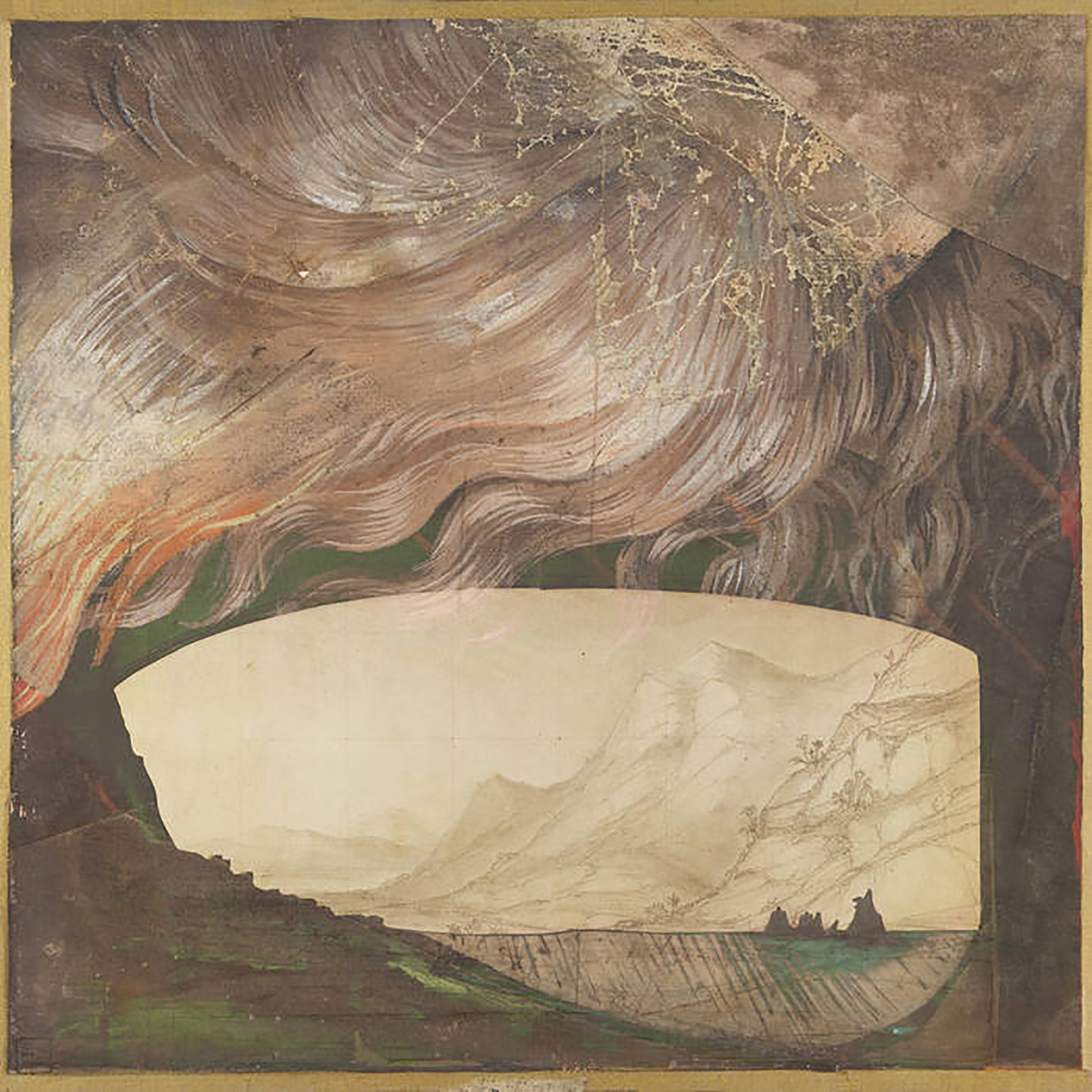
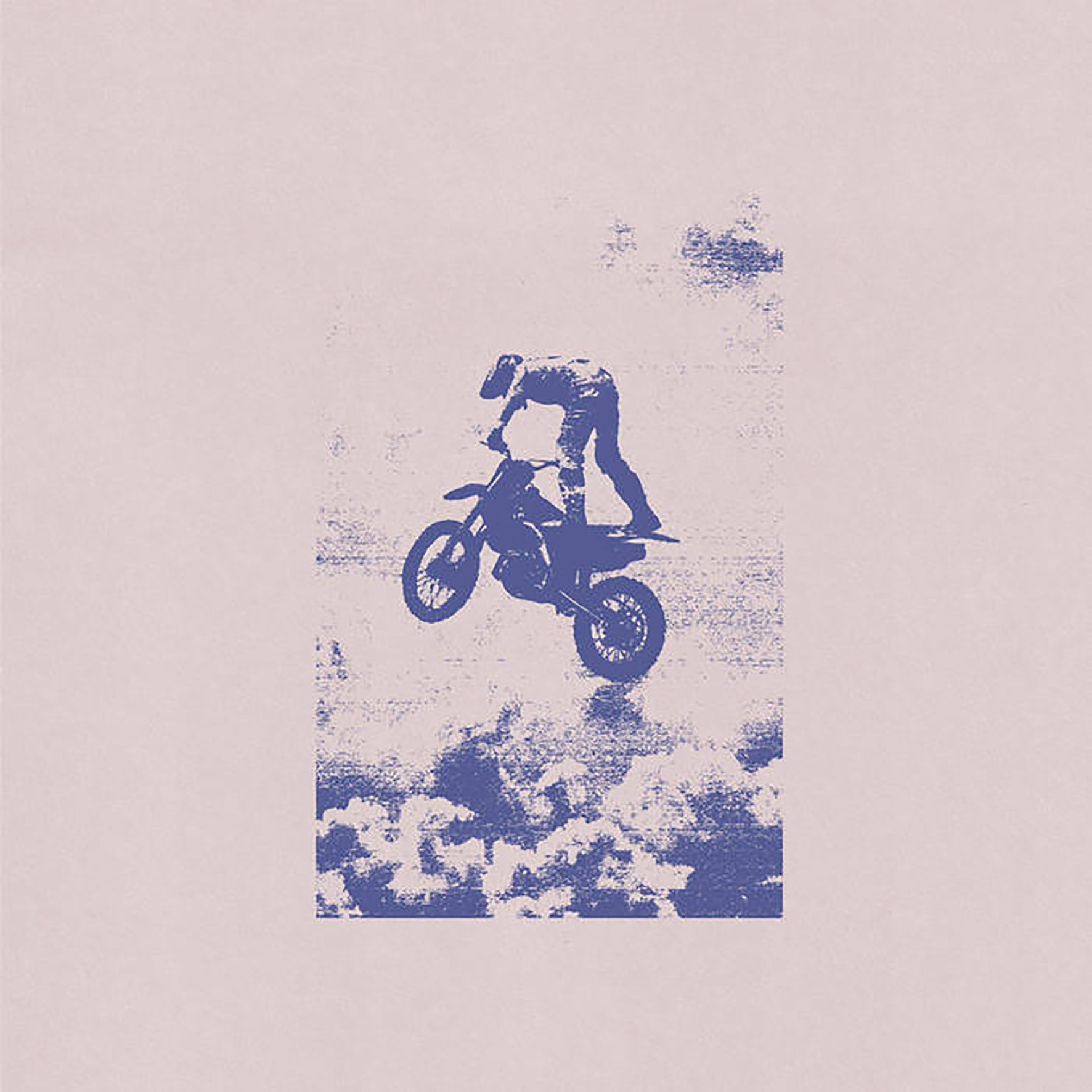 This is the debut album from a "network of New England string pluckers, organ drivers and bell ringers" centered around composer/pedal steel guitarist Henry Birdsey. This is my first real encounter with Birdsey's work, though I was vaguely aware of his duo Tongue Depressor with Crazy Doberman's Zach Rowdan. While I do not get the usual otherworldly "Just Intonation" vibe from Country Tropics' buzzing and layered harmonies, unconventional tunings have historically been a central theme in Birdsey's work, so that may be an element here too. Then again, Old Saw seems like a very different project than Birdsey's usual fare in one very significant way, as Country Tropics is billed as a unique strain of devotional music. I believe it is a secular one, however, as the album description claims "Old Saw points our gaze downward towards the terrafirma unconsidered, and guides our hands into the dirt" rather than towards a "fantastical, celestial vision of understanding." Regardless of their inspirations, Old Saw is an ensemble like no other, approximating a rustic drone or free folk ensemble like Pelt or Vibracathedral Orchestra in an especially warm and transcendent mood (albeit not so warm and transcendent as to preclude some welcome sharp edges, shadows of dissonance, and heavy buzzing strings). This is quite an excellent and unique album.
This is the debut album from a "network of New England string pluckers, organ drivers and bell ringers" centered around composer/pedal steel guitarist Henry Birdsey. This is my first real encounter with Birdsey's work, though I was vaguely aware of his duo Tongue Depressor with Crazy Doberman's Zach Rowdan. While I do not get the usual otherworldly "Just Intonation" vibe from Country Tropics' buzzing and layered harmonies, unconventional tunings have historically been a central theme in Birdsey's work, so that may be an element here too. Then again, Old Saw seems like a very different project than Birdsey's usual fare in one very significant way, as Country Tropics is billed as a unique strain of devotional music. I believe it is a secular one, however, as the album description claims "Old Saw points our gaze downward towards the terrafirma unconsidered, and guides our hands into the dirt" rather than towards a "fantastical, celestial vision of understanding." Regardless of their inspirations, Old Saw is an ensemble like no other, approximating a rustic drone or free folk ensemble like Pelt or Vibracathedral Orchestra in an especially warm and transcendent mood (albeit not so warm and transcendent as to preclude some welcome sharp edges, shadows of dissonance, and heavy buzzing strings). This is quite an excellent and unique album.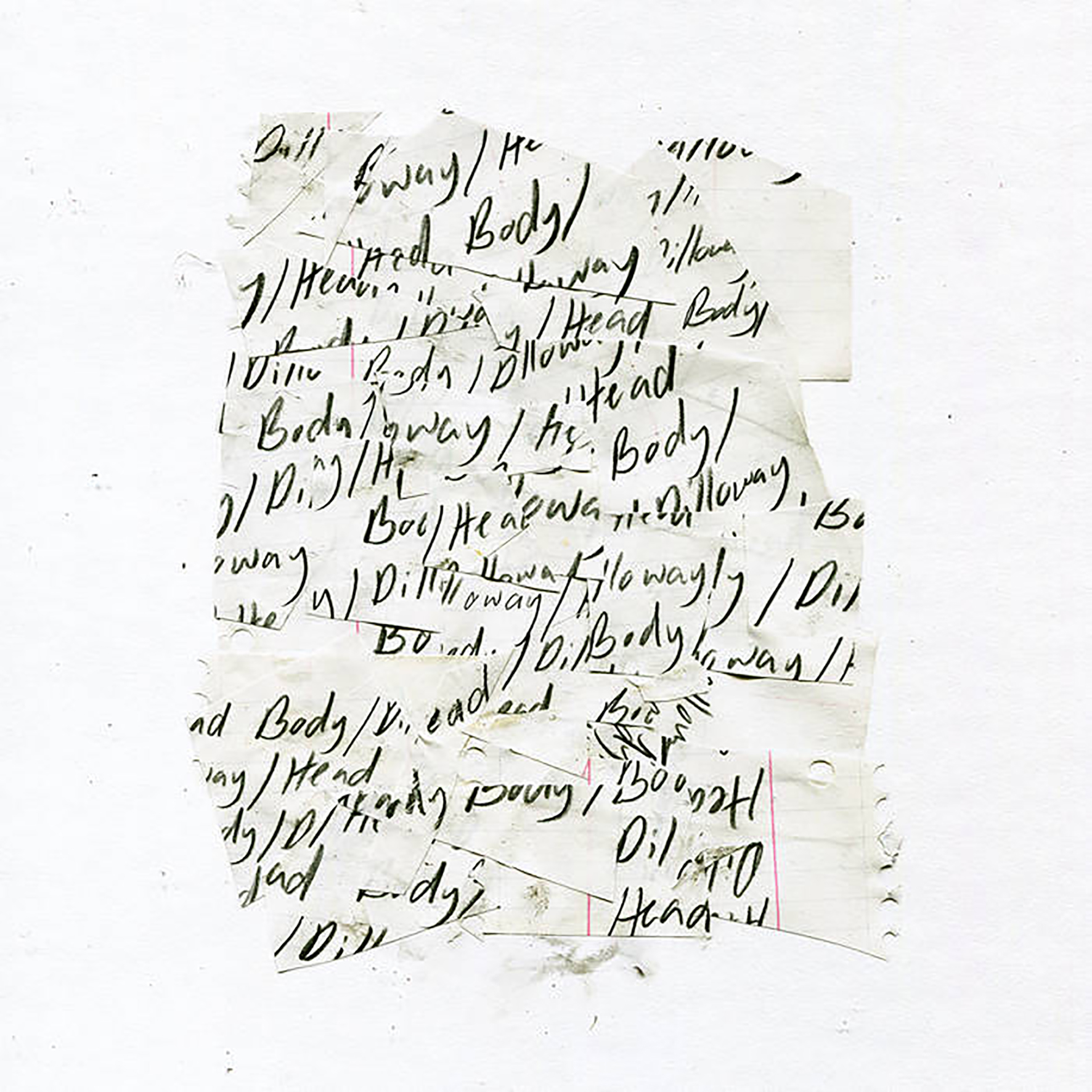 Past experience has taught me not to get too excited about promising-sounding collaborations between great artists, but the allure of this particular project was admittedly damn hard to resist: Body/Head is consistently the most provocative and intense of Sonic Youth's descendants and Aaron Dilloway seems absolutely incapable of releasing a disappointing album these days. Still, there is never any way to predict which threads will assert their dominance when distinctive visions collide, so there are a number of possible shapes that this album could have taken. To my ears, it is Dilloway's broken, murky, and obsessively looping aesthetic that mostly steers the ship, but the balance between the three artists is sufficiently unpredictable and shifting to make this trio feel like something quite different from either Dilloway's solo work or past Body/Head releases. Matt Krefting already did a fine job of summarizing the trio's shared vision with "over and over one gets the sense that the music is trying to wake itself from a dream," but it is also more than that, as this trio have a real knack for slowly transforming gnarled and challenging introductory themes into unexpected passages of sublime beauty.
Past experience has taught me not to get too excited about promising-sounding collaborations between great artists, but the allure of this particular project was admittedly damn hard to resist: Body/Head is consistently the most provocative and intense of Sonic Youth's descendants and Aaron Dilloway seems absolutely incapable of releasing a disappointing album these days. Still, there is never any way to predict which threads will assert their dominance when distinctive visions collide, so there are a number of possible shapes that this album could have taken. To my ears, it is Dilloway's broken, murky, and obsessively looping aesthetic that mostly steers the ship, but the balance between the three artists is sufficiently unpredictable and shifting to make this trio feel like something quite different from either Dilloway's solo work or past Body/Head releases. Matt Krefting already did a fine job of summarizing the trio's shared vision with "over and over one gets the sense that the music is trying to wake itself from a dream," but it is also more than that, as this trio have a real knack for slowly transforming gnarled and challenging introductory themes into unexpected passages of sublime beauty.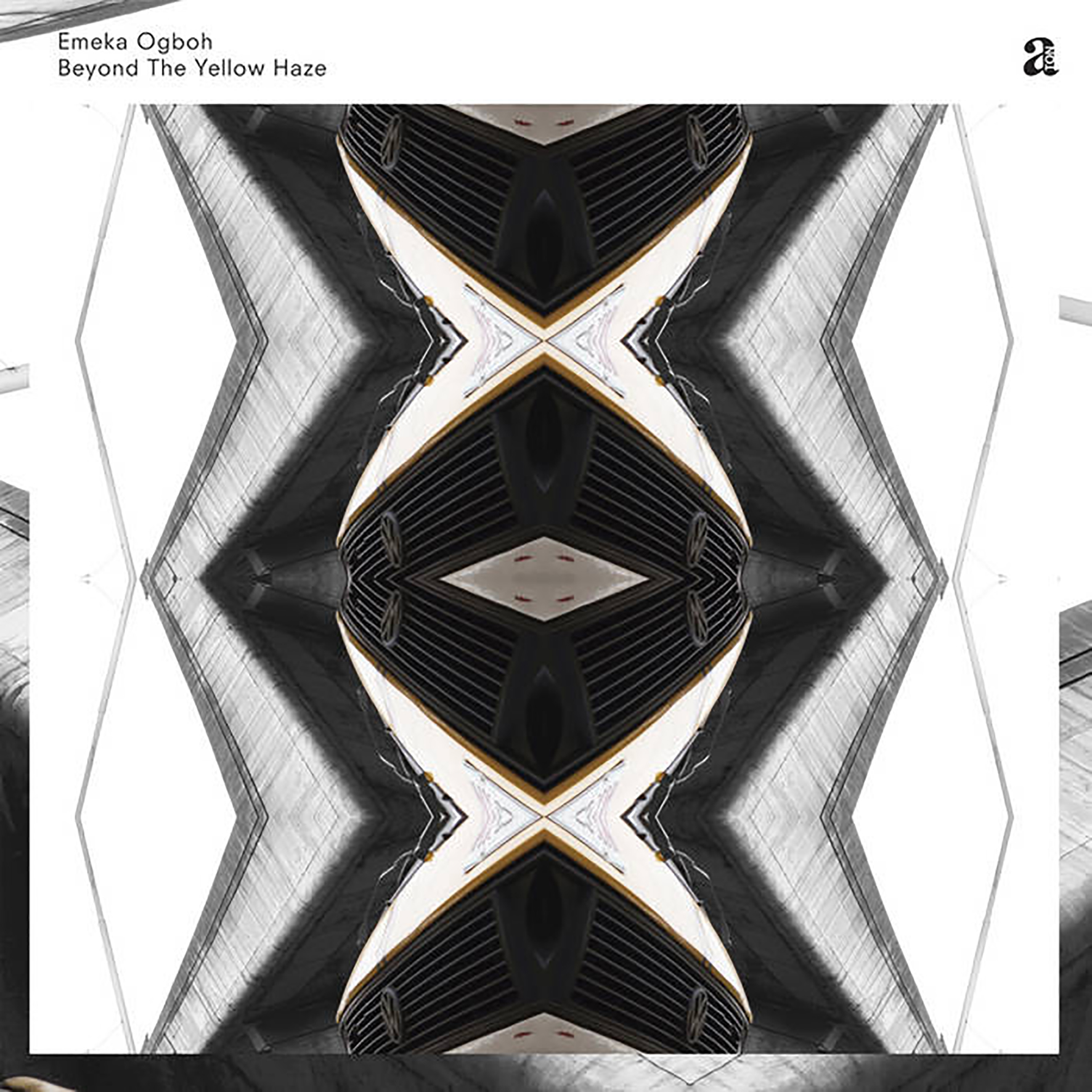 This bombshell release is the first album from Nigerian sound and installation artist Emeka Ogboh, but it sounds like the assured work of killer dub techno producer at the height of their powers. On its surface, Beyond The Yellow Haze admittedly (and probably unintentionally) shares a lot of common ground with prime Muslimgauze, as a central theme of Ogboh's art is his passion for capturing the ambient city sounds of Lagos. Consequently, these five pieces are nicely enhanced with layers of street noise, conversations, and passing snatches of melody, yet Beyond The Yellow Haze is primarily a great album because Ogboh is a goddamn wizard at crafting heavy, shape-shifting grooves with elegant dubwise percussion flourishes. I suppose the beats also creep into Muslimgauze territory at times, as Ogboh is similarly quite fond of slow and hypnotic grooves flavored with African and Arabic rhythms, yet the two artists differ dramatically when it comes to focus and exacting execution (among other things), as nearly every song here is a flawless diamond of immersively layered textures, slow-burning dynamic transformation, and crunching physicality. This is probably the strongest beat-driven album that I have heard all year, debut or otherwise.
This bombshell release is the first album from Nigerian sound and installation artist Emeka Ogboh, but it sounds like the assured work of killer dub techno producer at the height of their powers. On its surface, Beyond The Yellow Haze admittedly (and probably unintentionally) shares a lot of common ground with prime Muslimgauze, as a central theme of Ogboh's art is his passion for capturing the ambient city sounds of Lagos. Consequently, these five pieces are nicely enhanced with layers of street noise, conversations, and passing snatches of melody, yet Beyond The Yellow Haze is primarily a great album because Ogboh is a goddamn wizard at crafting heavy, shape-shifting grooves with elegant dubwise percussion flourishes. I suppose the beats also creep into Muslimgauze territory at times, as Ogboh is similarly quite fond of slow and hypnotic grooves flavored with African and Arabic rhythms, yet the two artists differ dramatically when it comes to focus and exacting execution (among other things), as nearly every song here is a flawless diamond of immersively layered textures, slow-burning dynamic transformation, and crunching physicality. This is probably the strongest beat-driven album that I have heard all year, debut or otherwise.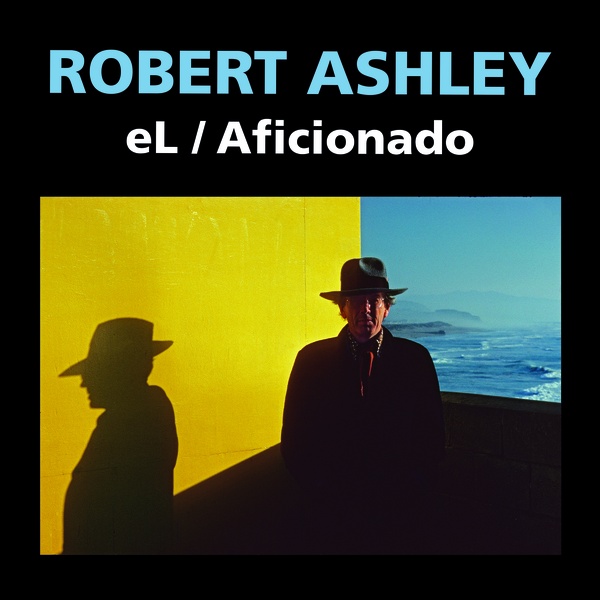 Robert Ashley’s enigmatic opera of interrogation was frequently performed between 1987 and 1993, and a previous recording was released on Lovely Music in 1994. The cast of a 2021 production in Roulette, Brooklyn, are featured on this new rendition, with Kayleigh Butcher, as The Agent, and Brian McCorkle, Bonnie Lander, Paul Pinto as Interrogators #1, 2, and 3. Above and beyond Ashley’s melodies, each participant singer is assigned their own distinct pitch around which they improvise vocal inflections to portray intent and meaning. eL/Aficionado displays the compelling depth of Ashley’s dazzlingly creativity, which is somewhere on a line leading from Edward Hopper and Samuel Beckett to Laurie Anderson and Len Jenkin.
Robert Ashley‚Äôs enigmatic opera of interrogation was frequently performed between 1987 and 1993, and a previous recording was released on Lovely Music in 1994. The cast of a 2021 production in Roulette, Brooklyn, are featured on this new rendition, with Kayleigh Butcher, as The Agent, and Brian McCorkle, Bonnie Lander, Paul Pinto as Interrogators #1, 2, and 3. Above and beyond Ashley‚Äôs melodies, each participant singer is assigned their own distinct pitch around which they improvise vocal inflections to portray intent and meaning. eL/Aficionado displays the compelling depth of Ashley‚Äôs dazzlingly creativity, which is somewhere on a line leading from Edward Hopper and Samuel Beckett to Laurie Anderson and Len Jenkin.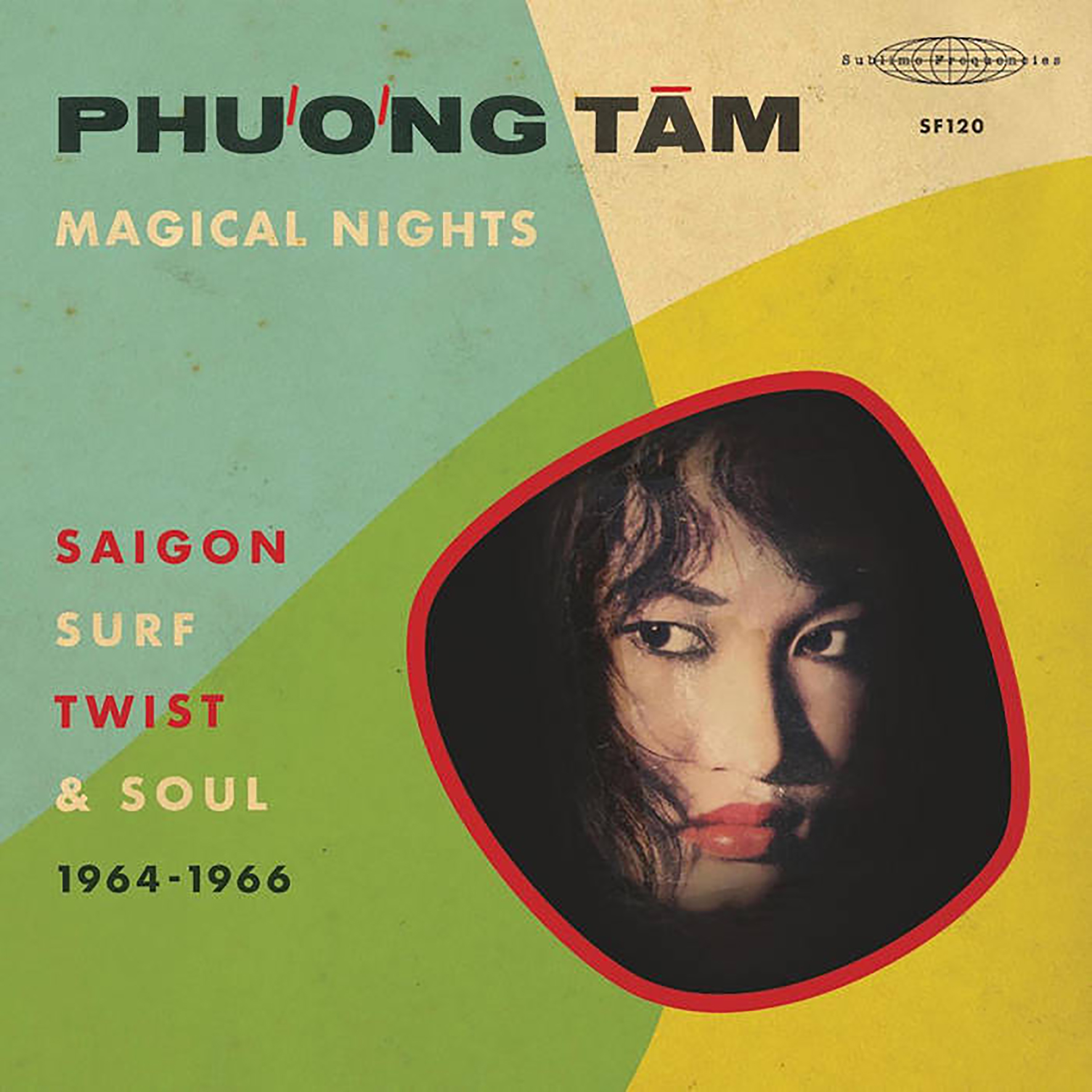 This collection, which I hereby deem an instant Sublime Frequencies classic, is devoted entirely to the long-unheard and elusive discography of one of the most magnetic singers of Saigon's "golden music" age. Part of the reason why Ph∆∞∆°ng T√¢m's work has languished in undeserved semi-obscurity is grimly predictable, as most of her music was destroyed during Vietnam's great purge of American-influenced culture in 1975, but T√¢m also abruptly ended her singing career in her prime to pursue forbidden love instead (an acceptably cool reason, I feel). According to her daughter Hannah H√†, Phương Tâm remained something of a highly localized karaoke supernova in the years since her stardom days, but H√† did not discover how truly famous her mom actually was until late 2019. One thing led to another and H√† found Mark Gergis after discovering his beloved Saigon Rock and Soul compilation. Gergis and a handful of like-minded crate-digging luminaries then set about tracking down as much of Ph∆∞∆°ng T√¢m's rare and often mistakenly attributed oeuvre as they could find, much of which even T√¢m herself had not heard since the recording sessions. While the journey to this album is undeniably a fascinating and heart-warming one, the best part is the songs themselves, as this album is a treasure trove of fun, soulful, and sexy genre-blurring gems from the golden age of swinging Saigon nightlife. Moreover, I was legitimately gobsmacked to learn that these songs were all recorded by the same person in such a brief span, as T√¢m channels everything from Brenda Lee to Ella Fitzgerald to the kind of impossibly cool, sexy, and ahead-of-their-time numbers that feel like would-be highlights from Lux Interior and Poison Ivy‚Äôs oft-anthologized record collection.
This collection, which I hereby deem an instant Sublime Frequencies classic, is devoted entirely to the long-unheard and elusive discography of one of the most magnetic singers of Saigon's "golden music" age. Part of the reason why Ph∆∞∆°ng T√¢m's work has languished in undeserved semi-obscurity is grimly predictable, as most of her music was destroyed during Vietnam's great purge of American-influenced culture in 1975, but T√¢m also abruptly ended her singing career in her prime to pursue forbidden love instead (an acceptably cool reason, I feel). According to her daughter Hannah H√†, Phương Tâm remained something of a highly localized karaoke supernova in the years since her stardom days, but H√† did not discover how truly famous her mom actually was until late 2019. One thing led to another and H√† found Mark Gergis after discovering his beloved Saigon Rock and Soul compilation. Gergis and a handful of like-minded crate-digging luminaries then set about tracking down as much of Ph∆∞∆°ng T√¢m's rare and often mistakenly attributed oeuvre as they could find, much of which even T√¢m herself had not heard since the recording sessions. While the journey to this album is undeniably a fascinating and heart-warming one, the best part is the songs themselves, as this album is a treasure trove of fun, soulful, and sexy genre-blurring gems from the golden age of swinging Saigon nightlife. Moreover, I was legitimately gobsmacked to learn that these songs were all recorded by the same person in such a brief span, as T√¢m channels everything from Brenda Lee to Ella Fitzgerald to the kind of impossibly cool, sexy, and ahead-of-their-time numbers that feel like would-be highlights from Lux Interior and Poison Ivy‚Äôs oft-anthologized record collection.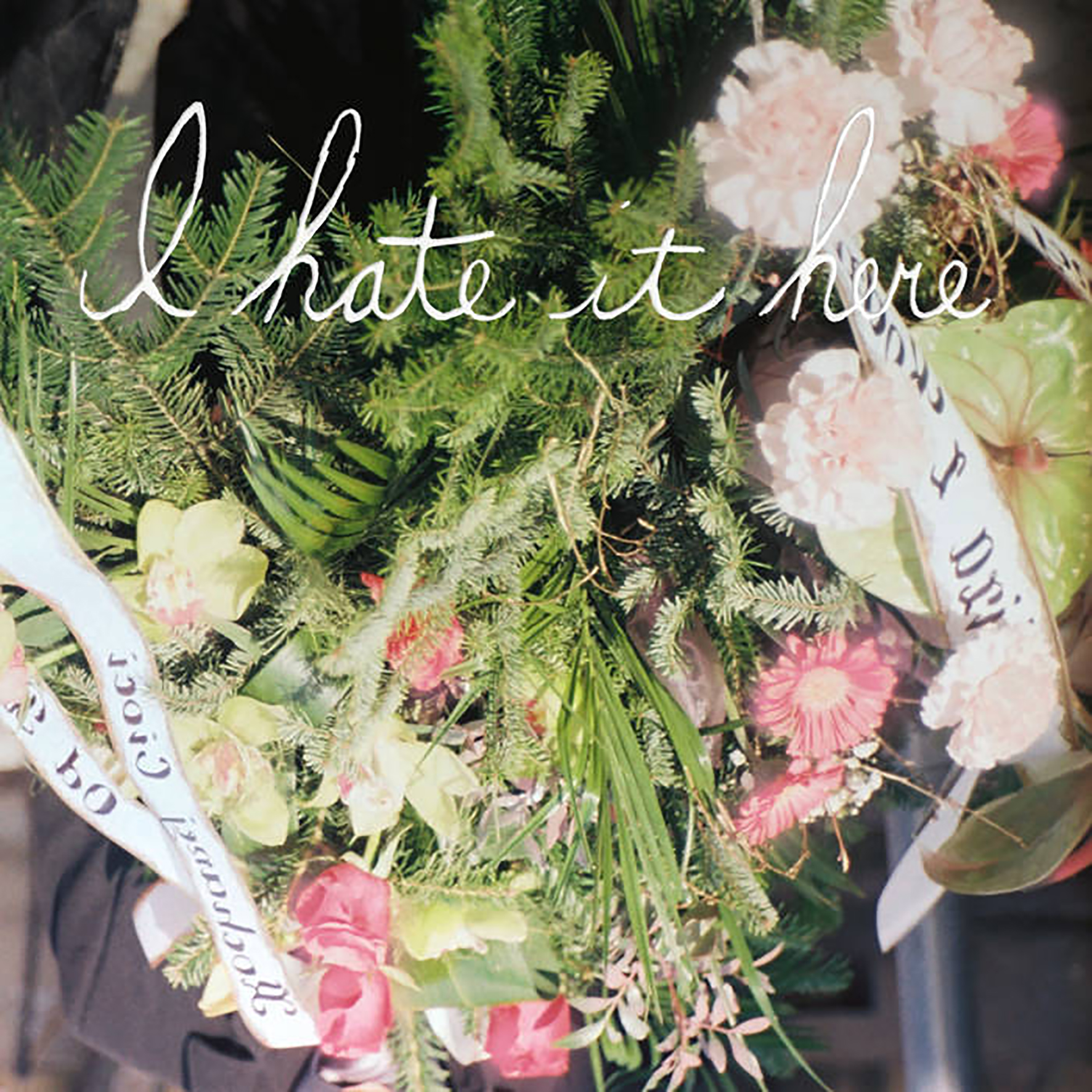 This unique debut album is definitely one of the year's most pleasant surprises, as art/music journalist Kretowicz assembled a bevy of talented collaborators to craft a poignant and subtly hallucinatory tour de force of autofiction-based sound art. While some of the people involved (Mica Levi, Tirzah, etc.) certainly enhance the initial allure of I hate it here, it is a great challenge to focus on anything other than Kretowicz's sardonic, time-bending narrative as soon as she opens her mouth and things gets rolling. Thematically, the album is billed as a "psychedelic audio narrative" that "wanders through a layered and multi-dimensional notion of existence as suffering," which mostly feels apt, yet it fails to convey how truly charming and blackly funny wandering through that notion with Kretowicz can be. More importantly, this is the rare spoken word album that remains compelling beyond the first listen, as the combination of Kretowicz's deadpan, accented voice and the sound collage talents of felicita & Ben Babbitt make it an absorbing delight long after the meaning and impact of Kretowicz's words dissipate into more abstract and nuanced pleasures like texture and feeling. To my ears, this is one of the most inspired, immersive, and memorable albums of the year.
This unique debut album is definitely one of the year's most pleasant surprises, as art/music journalist Kretowicz assembled a bevy of talented collaborators to craft a poignant and subtly hallucinatory tour de force of autofiction-based sound art. While some of the people involved (Mica Levi, Tirzah, etc.) certainly enhance the initial allure of I hate it here, it is a great challenge to focus on anything other than Kretowicz's sardonic, time-bending narrative as soon as she opens her mouth and things gets rolling. Thematically, the album is billed as a "psychedelic audio narrative" that "wanders through a layered and multi-dimensional notion of existence as suffering," which mostly feels apt, yet it fails to convey how truly charming and blackly funny wandering through that notion with Kretowicz can be. More importantly, this is the rare spoken word album that remains compelling beyond the first listen, as the combination of Kretowicz's deadpan, accented voice and the sound collage talents of felicita & Ben Babbitt make it an absorbing delight long after the meaning and impact of Kretowicz's words dissipate into more abstract and nuanced pleasures like texture and feeling. To my ears, this is one of the most inspired, immersive, and memorable albums of the year. This is one of those rare collaborations in which I had absolutely no idea what kind of album to expect, as the only obvious common ground this duo shares is a strong interest in sound design, though it is probably safe to say they are both drawn to unusual projects too given their past involvement with Rắn Cạp ĐuôI Collective. Now that I have heard Myxomy, however, I am faced with the fresh challenge of describing a vision that is elusively shapeshifting, kaleidoscopic, and wrong-footing from start to finish. I suppose the most consistent aesthetic is something akin to "half-deconstructed/half-maximalist outsider R&B" or some similarly heretofore nonexistent genre, but the real theme seems to exclusively be one of endless mutation. In fact, the idea for the collaboration originally began with James Ginzburg sending Ziúr some beats from his early techno days, which triggered a dueling exchange of raw material reworkings that rapidly escalated and morphed until the "duo's fragmented sketches and scribbles took on new life" that "developed into anxious, hybridized pop jewels." To be fair, Myxomy is admittedly poppier than I ever would have anticipated, but this project is waaaaay too weird, fractured, and unpredictable to ever be mistaken for actual pop (jewels or otherwise). It mostly feels more like a handful of hooks wandering through a collapsed post-industrial landscape in search of a proper home. I am not sure any of them ever quite found one (seems doubtful), but some of these experiments are impressively visceral and unique in their own right (even if they can sometimes be a real challenge to digest).
This is one of those rare collaborations in which I had absolutely no idea what kind of album to expect, as the only obvious common ground this duo shares is a strong interest in sound design, though it is probably safe to say they are both drawn to unusual projects too given their past involvement with Rắn Cạp ĐuôI Collective. Now that I have heard Myxomy, however, I am faced with the fresh challenge of describing a vision that is elusively shapeshifting, kaleidoscopic, and wrong-footing from start to finish. I suppose the most consistent aesthetic is something akin to "half-deconstructed/half-maximalist outsider R&B" or some similarly heretofore nonexistent genre, but the real theme seems to exclusively be one of endless mutation. In fact, the idea for the collaboration originally began with James Ginzburg sending Ziúr some beats from his early techno days, which triggered a dueling exchange of raw material reworkings that rapidly escalated and morphed until the "duo's fragmented sketches and scribbles took on new life" that "developed into anxious, hybridized pop jewels." To be fair, Myxomy is admittedly poppier than I ever would have anticipated, but this project is waaaaay too weird, fractured, and unpredictable to ever be mistaken for actual pop (jewels or otherwise). It mostly feels more like a handful of hooks wandering through a collapsed post-industrial landscape in search of a proper home. I am not sure any of them ever quite found one (seems doubtful), but some of these experiments are impressively visceral and unique in their own right (even if they can sometimes be a real challenge to digest).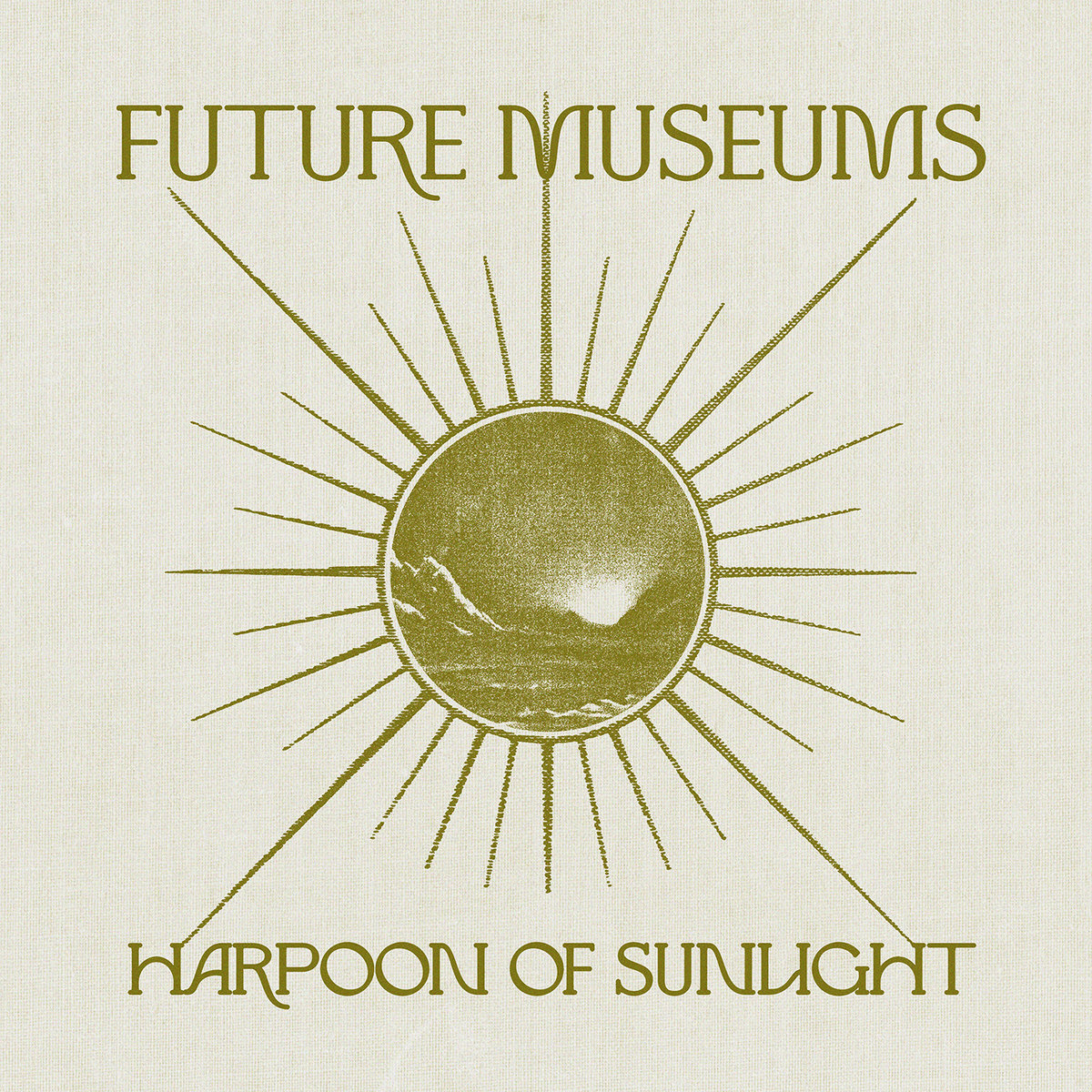 "Harpoon of Sunlight" sees Neil Lord's project Future Museums releasing on Austin label Aural Canyon, a label whose tagline reads "Deep listening for the new, now age." While Lord also releases on Holodeck, the switch is appropriate for his latest, a work initially conceived as "an hour and a half long album exercising patience and repetition," of which the most melodic portions were pressed to the first vinyl release for both the artist and label. Recorded in quarantine in 2020, the resulting album reflects the intense Texas summer heat, alternating between warming and traumatic, interrupted only by cooler evening breezes that serve as a reprieve. Inventive percussive sounds are delicately strewn through atmospheric synths and motorik rhythms, providing a balance between hard and soft, and hot to cool, serving as an aural respite for the challenges of the past couple of years.
"Harpoon of Sunlight" sees Neil Lord's project Future Museums releasing on Austin label Aural Canyon, a label whose tagline reads "Deep listening for the new, now age." While Lord also releases on Holodeck, the switch is appropriate for his latest, a work initially conceived as "an hour and a half long album exercising patience and repetition," of which the most melodic portions were pressed to the first vinyl release for both the artist and label. Recorded in quarantine in 2020, the resulting album reflects the intense Texas summer heat, alternating between warming and traumatic, interrupted only by cooler evening breezes that serve as a reprieve. Inventive percussive sounds are delicately strewn through atmospheric synths and motorik rhythms, providing a balance between hard and soft, and hot to cool, serving as an aural respite for the challenges of the past couple of years.